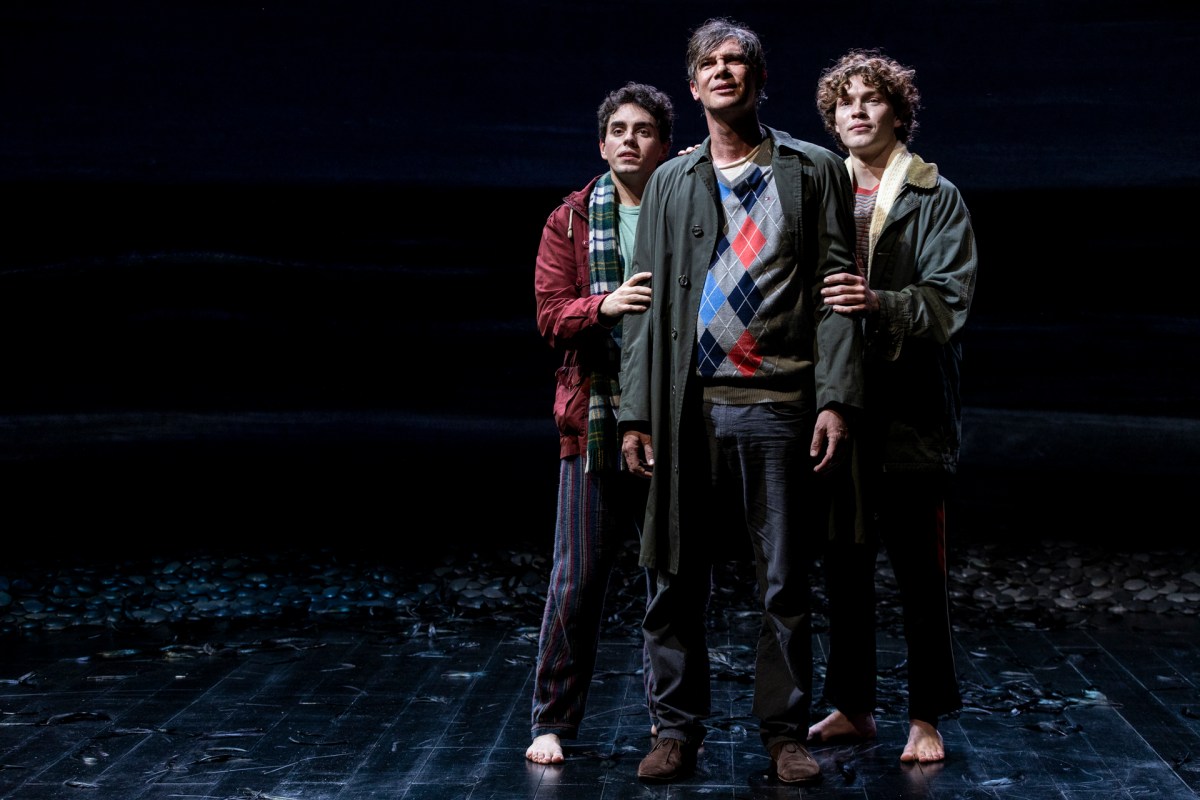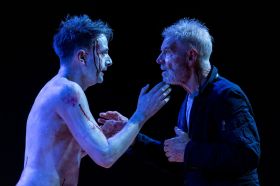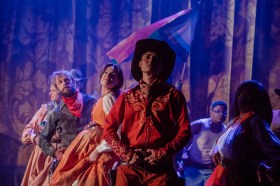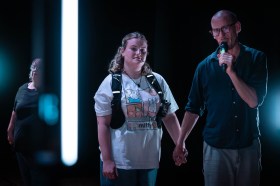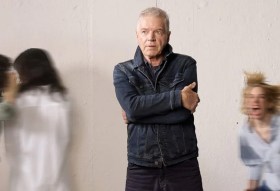Grief is the Thing with Feathers: quick links
Belvoir St Theatre’s new production of Grief is the Thing with Feathers has the potential to reach excellence, but it doesn’t quite achieve that full potential.
There’s much to respect – from the source material’s emotional depth and poeticism to the exceptional performances, lighting and sound design – but the production ultimately struggles with the demands of its adapted structure and expression.
The play is based on the acclaimed novella by Max Porter about a widowed father of two young boys who is dealing with his grief after the sudden death of his wife.
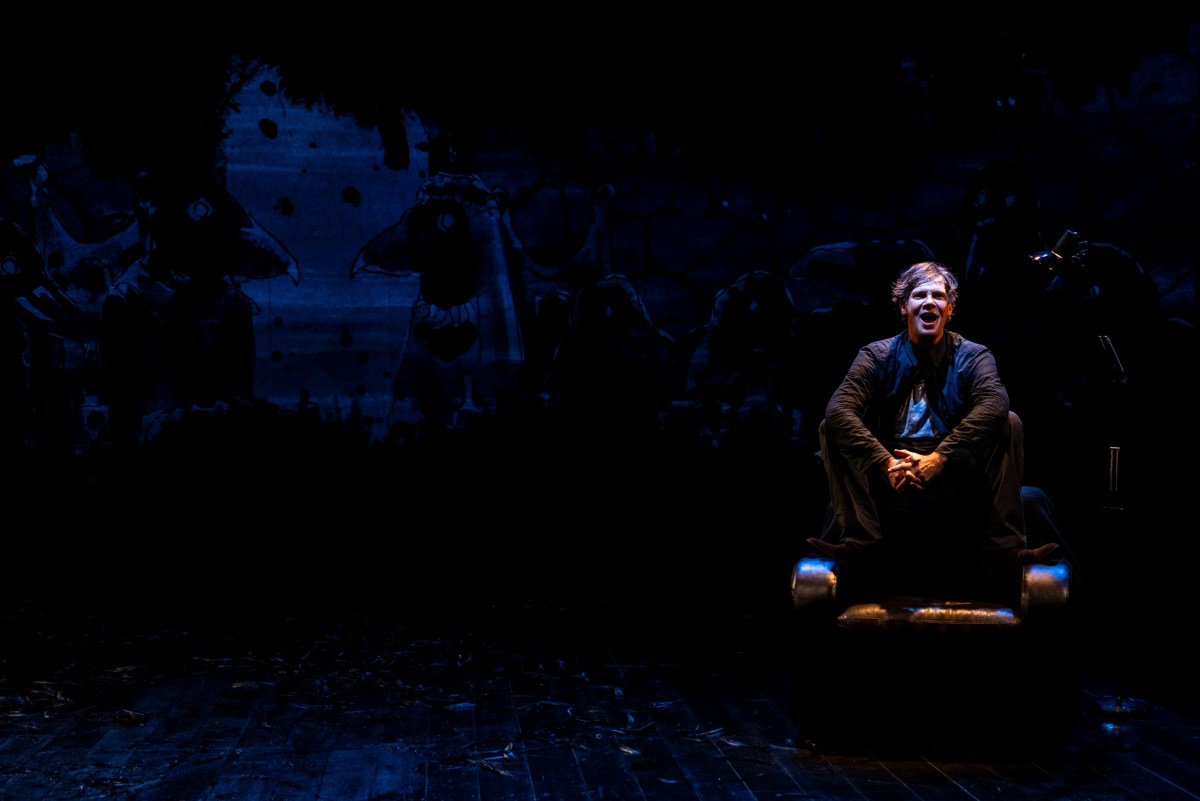
Porter uses a mixture of prose, poetry and fable. His story features a fragmented non-linear narrative and vivid imagery that blends emotional intensity with poetic devices and includes short sections with shifting perspectives. It also relies on a mythical creature, Crow, who serves as an embodiment of grief.
The challenge faced by this production is translating all these unique characteristics into a theatrical format and communicating them to an audience who don’t have the luxury of pausing the story’s intensity to absorb the imagery and content in their own time and way.
Grief is the Thing: structure
In this stage adaptation, the three-part structure of Porter’s novella is maintained, and its lyrical fragmentation is captured through short, sharp sequences that continually shift in perspective, emotion, and narrative style.
This approach evokes the chaos and confusion of grief. Transitions are punctuated by powerful shocks of sound and lighting, creating moments of sensory dissonance, and they emphasise the emotional turmoil.
The set is moody – dark and black. It represents the apartment where the father lives with his sons, and where the mother’s absence is most felt. The space feels suspended in time. A full-length curved screen forms the backdrop across the width of the stage.
On it, black-and-white animated digital projections – stark, sketch-like, and often impressionistic – appear intermittently. These visuals create a sense of detachment, memory, and fable. They reinforce the idea that grief distorts space, time, and perspective.
Under a soft spotlight on a raised platform at the rear of the stage sits cellist, Freya Schack-Arnott. She is present throughout the entire performance, fading in and out with the light. Her evocative compositions add complexity and depth, and they enrich the atmosphere with a subtle power.
But, despite this inventive staging, an emotional connection with the characters is never fully developed or sustained, even after over nearly two hours of watching them. This reviewer came prepared with a pile of tissues and did not need to use one.
Grief is the Thing: distance
A sense of distance is established almost immediately. The characters adopt English accents, and the father speaks in language that is elaborate, poetic, and cerebral – far removed from everyday speech.
This stylisation, while thematically appropriate, alienates the audience from the raw intimacy of the family’s grief. This might have been a deliberate creative decision, but it doesn’t feel satisfying to leave a production without experiencing very much empathy for characters who are grieving.
Toby Schmitz plays not only the father but also jolts out of this cerebral and reserved persona to play the crass, healing and animated Crow. He is tirelessly brilliant in both roles, and we witness through him the exhaustion and disorientation of grief.
One particularly beautiful scene shows Schmitz reveal the father’s sensitivity and personality traits as he attends a talk by his literary icon, Ted Hughes. It is in this scene that we see how devastating the death of his partner would be to this reserved and exposed character.
Grief is the Thing: young sons
The roles of the two young sons are played by adult actors Philip Lynch and Fraser Morrison. While both are skilled performers and deliver strong work, the production could have benefited from casting younger actors – at least in the scenes where the boys are clearly meant to be very young.
This choice might have added a vulnerability and emotional immediacy to the production that at times felt missing.
There is much verbosity in the production and little space to pause in the silence of grief. The shifts in perspective are often unclear, and together these elements create a sense of weariness.
But the fast, chaotic pace slows in the third act, where we finally learn how the mother died, and there are fleeting moments in which the audience is allowed to feel.
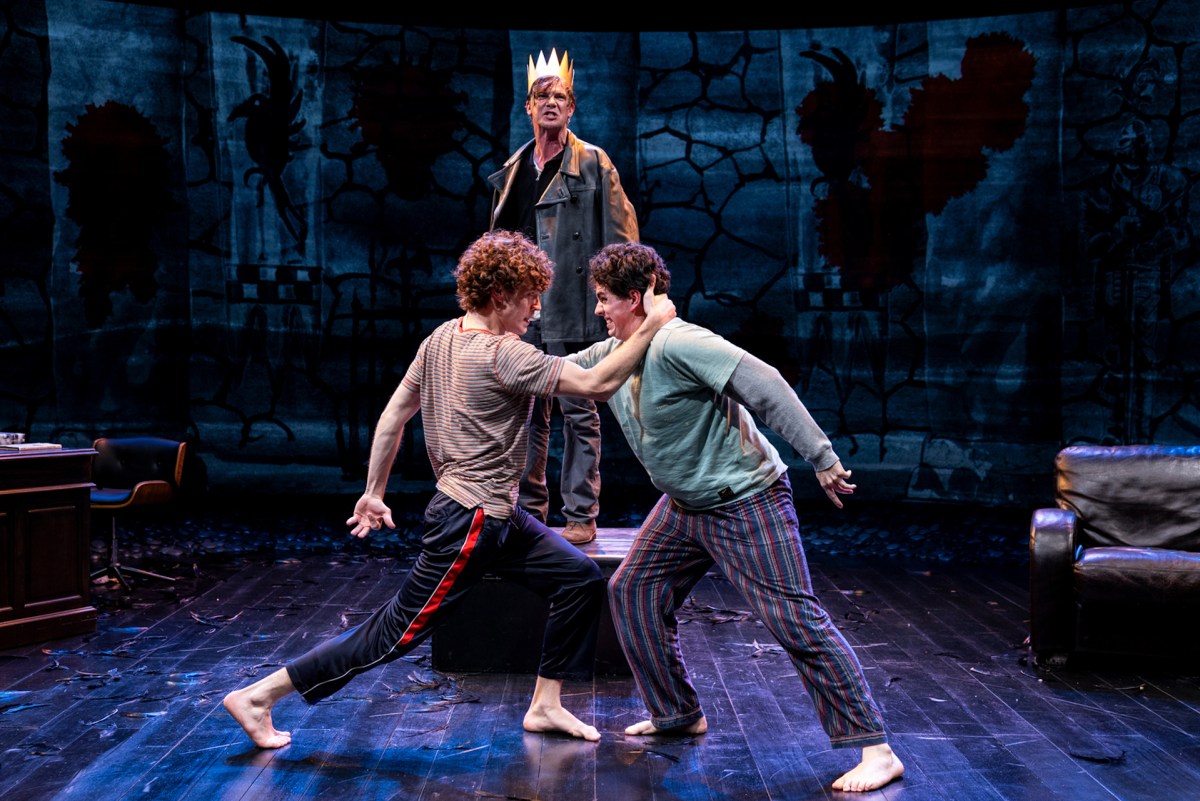
The dialogue is often deeply reflective, perceptive and humorous. A particularly touching contrast to the overwhelming chaos of the mother’s death comes when the boys visit their dying grandmother and recount her cracking philosophical advice to them from her deathbed.
Overall, there is enough quality to balance out many of the deficiencies and it is worth seeing. There is a regrettable emotional distance in the execution, yet the theatrical ambition of reimagining of Porter’s novel calls for much respect and admiration.

